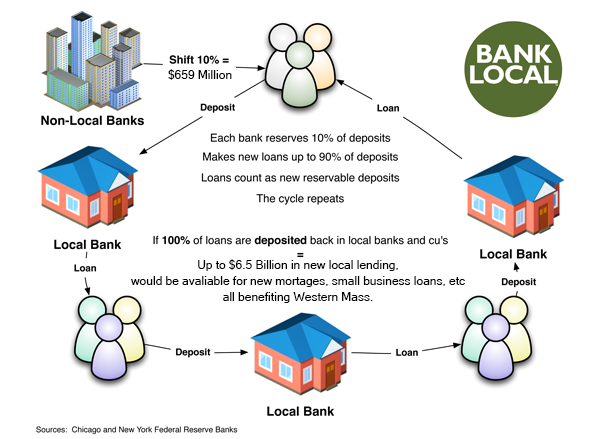The foundation of a healthy community is a strong economy. When people are employed and financially secure they are better/more able to positively contribute to their community in a more meaningful way. A stable and balanced economy creates safety and security that then allow other aspects of community life to flourish.
“Community Economic Development (CED) is action by people locally to create economic opportunities and better social conditions, particularly for those who are most disadvantaged. CED is an approach that recognizes that economic, environmental and social challenges are interdependent, complex and ever-changing. To be effective, solutions must be rooted in local knowledge and led by community members. CED promotes holistic approaches, addressing individual, community and regional levels, recognizing that these levels are interconnected.” (Source: The Canadian CED Network).
Below are five ways local governments, citizens, organizations and entrepreneurs can create more local economic activity.
1) Support locally owned businesses – Buy local!
The best way to help strengthen your local and regional economy is to support locally owned businesses.
“Communities with a greater concentration of small, locally owned businesses have healthier populations. They also enjoy higher rates of civic engagement and sustain higher property values.” (American Independent Business Association)
By supporting locally owned businesses, you: help support local job creation, keep more money circulating in your local economy, and often receive better service. Local business owners are literally invested in their local community so they are more likely to give back, doing so by sponsoring local community events and initiatives, for example. Local businesses contribute to the authentic character of a place and are often more likely to reduce their environmental impact.
2) Bank locally
Many people understand the value of shopping locally but overlook the benefits of banking locally. When you bank locally you help keep more money circulating in the local economy. Credit unions (or local banks) are more likely to lend to and invest in local businesses, they often sponsor local initiatives and typically provide community development programs.
3) Local in-person exchanges – Recycle and Reuse!
Another way you can positively impact both your local economy and the environment is by doing business directly with people in your community. Selling and buying unwanted items from other people helps citizens save money and the landfill. Krrb is an online classified system that enables in-person community commerce. The website connects people who want to buy, sell, trade, rent and give away items with other people in their community. The site is user-friendly and feels much more like a community than other online marketplaces like Craigslist and eBay.
4) Hire local people directly
Do you ever wish there was an easier way to connect with service providers in your community? TaskRabbit is an online peer-to-peer skills marketplace where people can outsource household errands and skilled tasks to local businesses, but also to individuals in their community – people who can help walk your dog, babysit your kids, mow your lawn, hem your pants, wash your windows, design a logo, build a website, or even teach you how to use Photoshop. Task Rabbit helps strengthen the local economy by creating casual freelance employment opportunities. >> Learn more about TaskRabbit
“TaskRabbit is betting on a future where employment will seem much more like a series of small-scale agreements between businesses and labor than jobs in the traditional sense.” (Bloomberg Newsweek)
There’s also a Canadian version called Ask for Task that allows people to browse, place and assign tasks within their community. Ask for Task has over 50,000 subscribers and has created over $2,000,000 in informal employment.
5) Invest in small businesses and entrepreneurs
Small business and entrepreneurs are the life blood of the local economy. One of the biggest challenges they face is securing investment funding so they can realize their dreams and turn their plans into reality. One non-traditional source of fundraising available to entrepreneurs is crowdfunding, which involves securing investments from a network of individuals. Websites like Kickstarter Canada create a place for people, groups and organizations to fundraise by leveraging small contributions from many individuals. Since launching in 2009, Kickstarter has had 5.8 million people pledge $1 billion, funding over 60,000 creative projects in North America.
mdibdin[at]whistlercentre.ca

